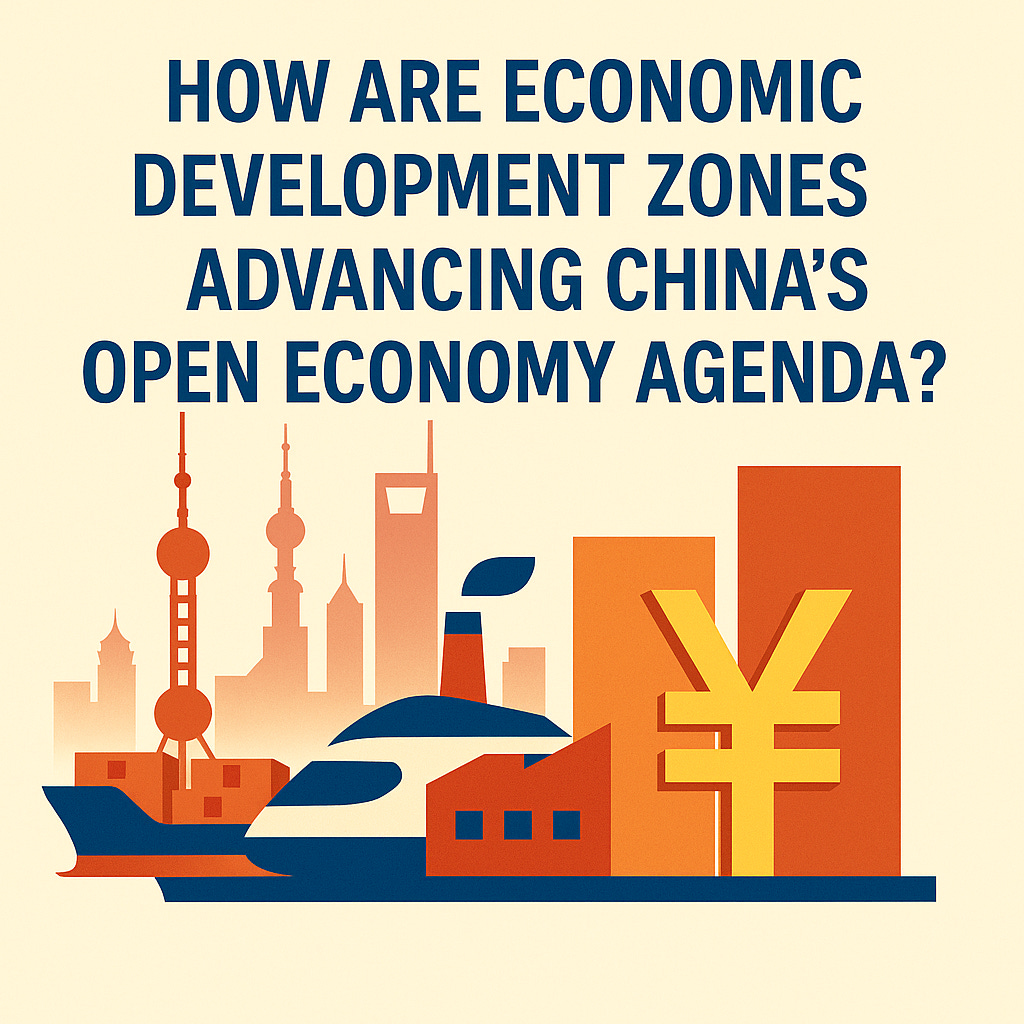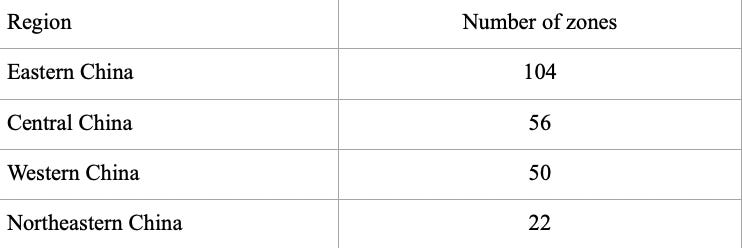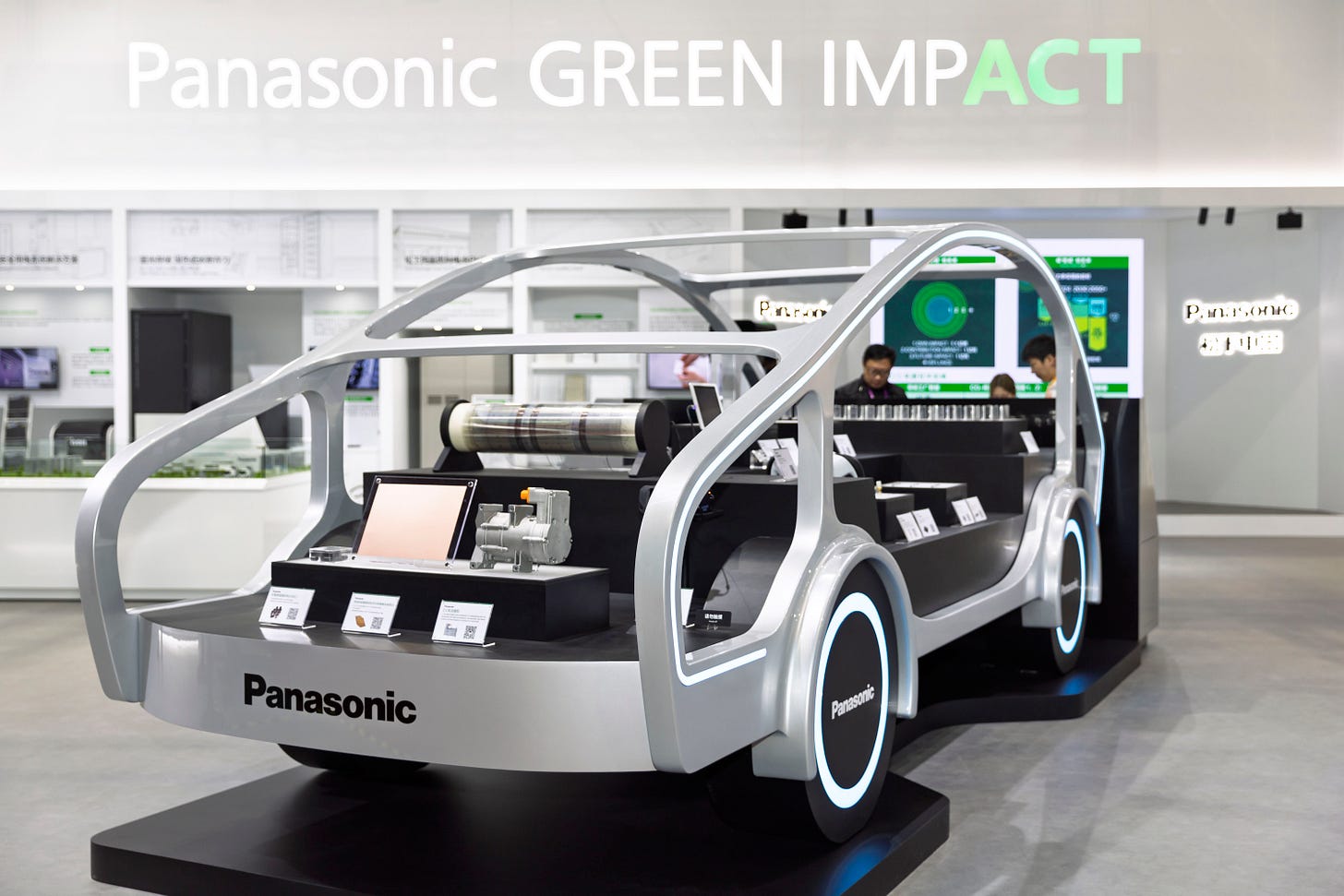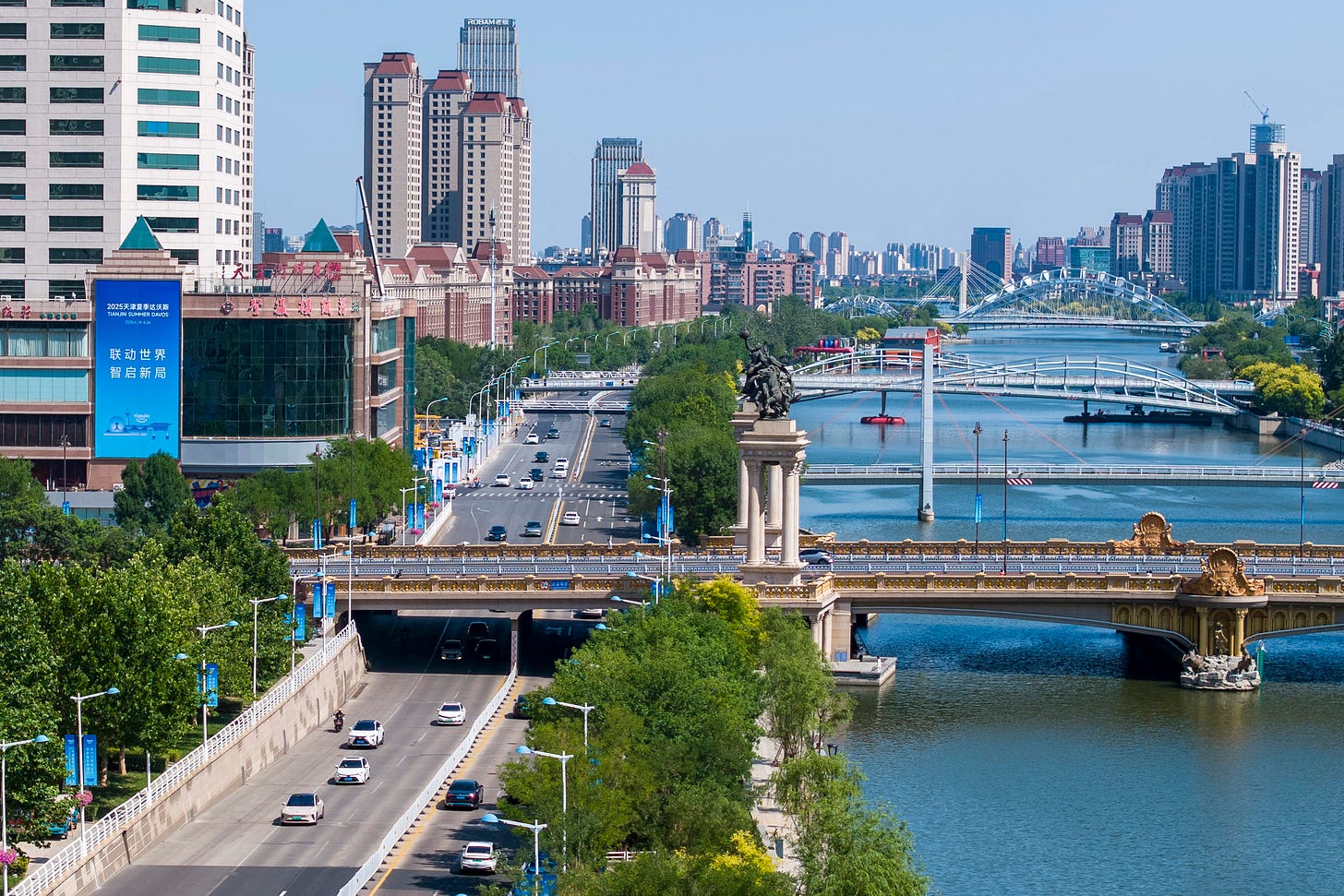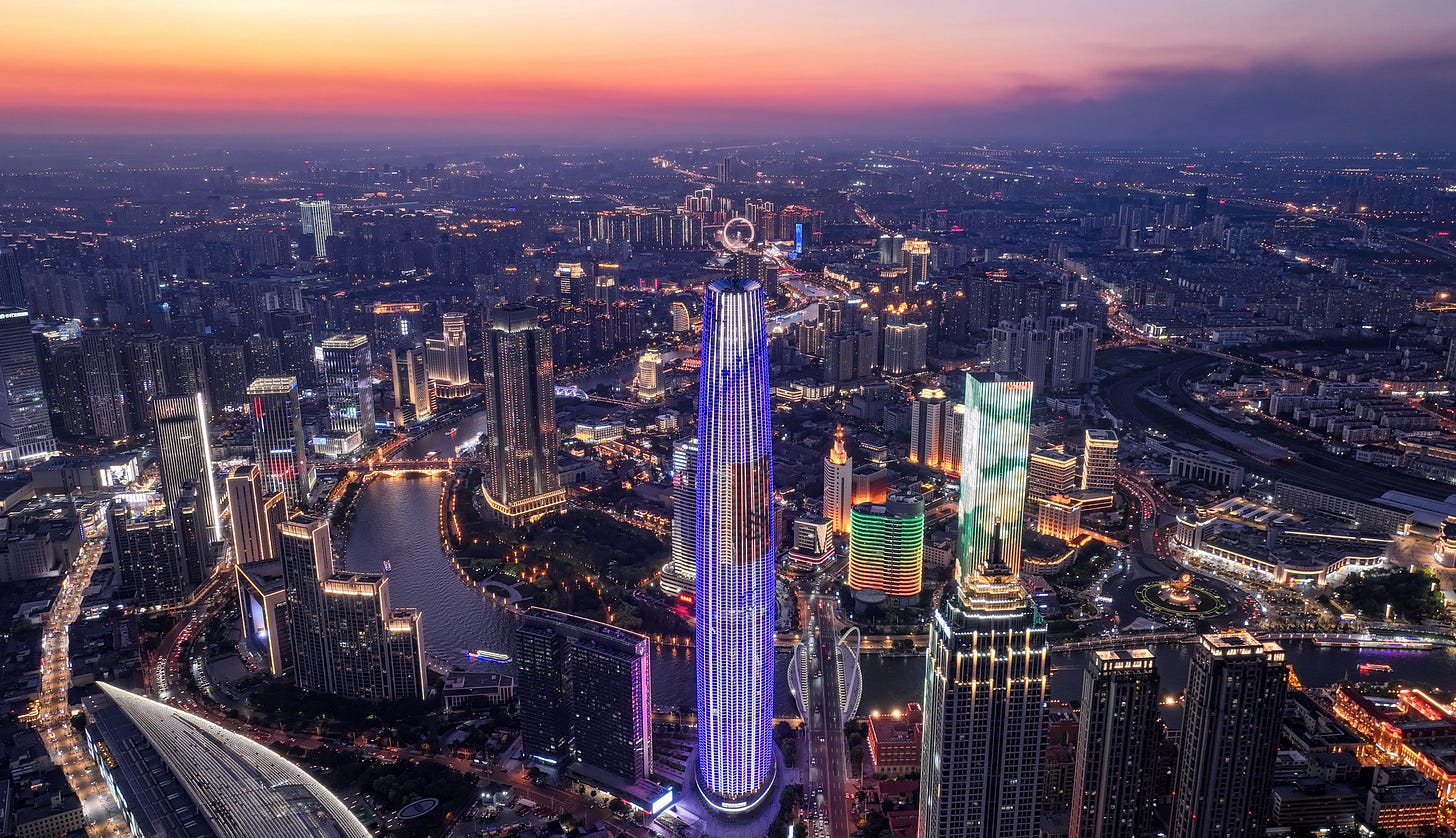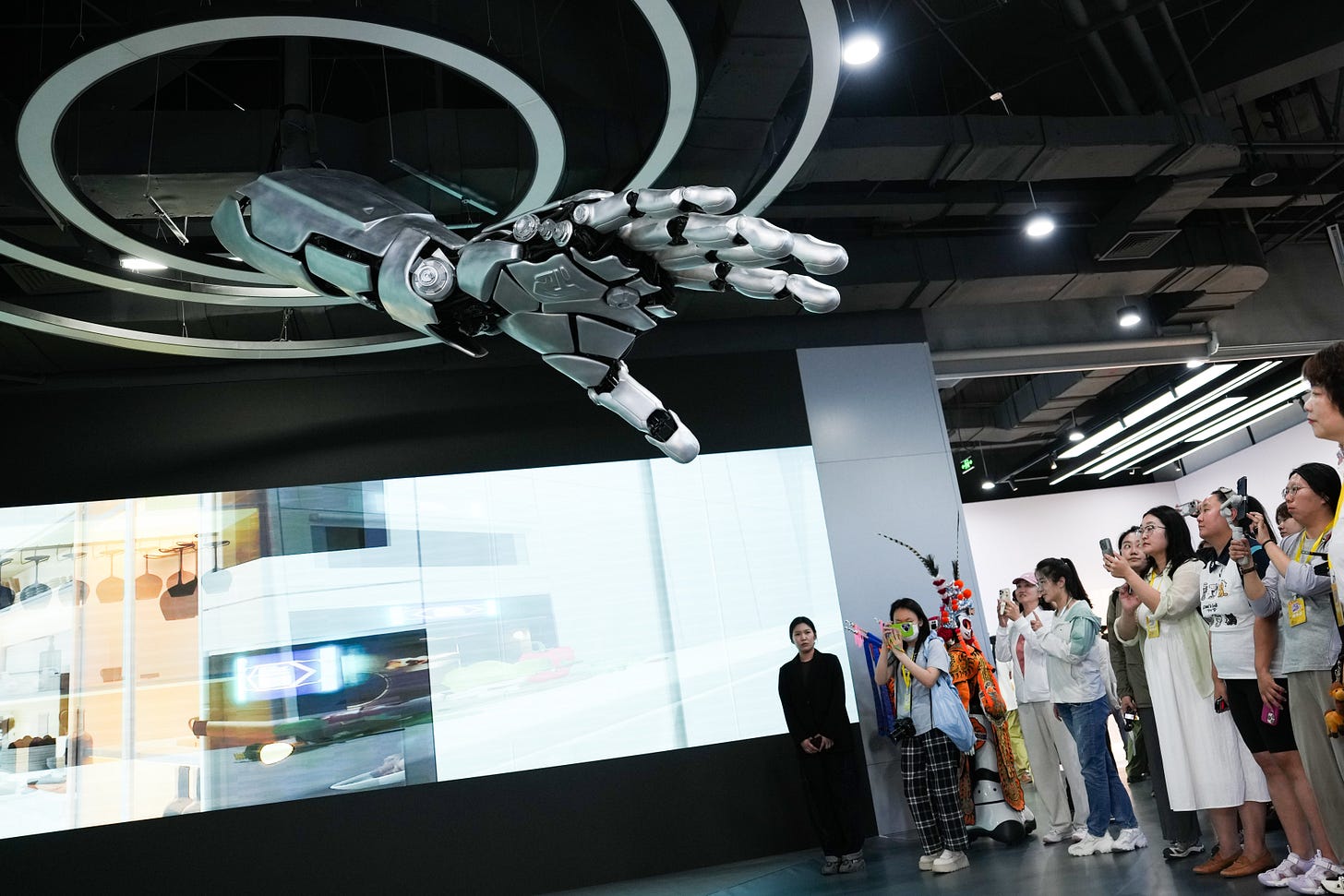How are economic development zones advancing China's open economy agenda?
In 1984, against the backdrop of China's sweeping economic reforms, the country launched its first 14 national-level economic and technological development zones across 12 coastal cities.
The bold move came just four years after the establishment of the first special economic zone in Shenzhen -- a once fishing village that was rapidly transforming into a symbol of China's opening up.
Over the span of four decades, the experiment along the coast has evolved into a vast national network of 232 development zones, now spanning 31 provincial-level regions in China.
These zones have witnessed and shaped China's journey in breaking through planned economy barriers and stepping toward a global economic powerhouse.
This briefing traces the evolution of national-level economic and technological development zones in tandem with globalization and relocation of industries worldwide, and examines how these zones today are embracing innovation aligning with China's broader push for high-quality development.
PIONEERS OF REFORM
From the beginning, national economic and technological development zones have served as pioneers of reform. Over the past 40 years, such zones have seen remarkable achievements in economic vitality and business environment thanks to their persistent reform efforts.
📊 Distribution of National Economic Development Zones Across China
Total: 232 zones across 31 provincial-level regions
In 2024 alone, they attracted 27.2 billion U.S. dollars in utilized foreign direct investment, a figure comparable to levels seen in European countries.
“Development zones have been among China’s earliest gateways to international openness since their establishment,” said Ji Xiaofeng, an official at the Ministry of Commerce's foreign investment department.
Major multinational firms including P&G, Motorola, and Panasonic were among the earliest investors.
Panasonic, a 47-year veteran of the Chinese market, now operates 64 legal entities in China, employing over 40,000 people. Its 2024 fiscal year sales in China neared 100 billion yuan (14 billion U.S. dollars), almost a quarter of its global revenue.
The Japanese electronics giant has a presence in eight national economic and technological development zones -- including Beijing, Tianjin, Shanghai, Suzhou, and Hangzhou -- covering both traditional sectors like electronics and emerging fields such as communications, automotive, and artificial intelligence (AI).
"Panasonic is deeply embedded in China's industrial and supply chains," said Zhao Bingdi, president of Panasonic China. "The business-friendly environment in these zones, their highly professional and efficient support will continue to energize the firm's growth in China."
To date, such zones are home to more than 60,000 foreign-invested enterprises and around 99,000 firms engaged in foreign trade. In 2024 alone, they generated 10 trillion yuan in foreign trade -- nearly a quarter of the national total.
INNOVATION HUB IN THE NEW ERA
Despite mounting external uncertainties and domestic challenges, China’s national economic and technological development zones are harnessing their innovation strengths to inject new momentum into the country’s pursuit of high-quality growth.
These zones, also strong manufacturing bases and dense industrial clusters, house about 14 percent of the country's industrial enterprises with revenue over 20 million yuan.
Experts note that their high-tech infrastructure makes them ideal for scaling up innovations, which gives them a unique advantage in driving China's industrial upgrading and developing new quality productive forces.
"Innovation is a key reason economic development zones remain competitive and dynamic," Ji said.
To deepen reforms in these zones, the Ministry of Commerce in May released a blueprint plan outlining 16 new policy measures across four major areas to cultivate new quality productive forces, elevate economic openness and deepen reforms of management systems.
Core strategies include:
Boosting synergy between technological and industrial innovation.
National economic development zones are home to over 700 national-level incubators and innovation spaces, with more than 18 percent of the country's high-tech enterprises.
Accelerating the upgrade of traditional industries.
New technologies and models are being used to revitalize sectors like petrochemicals, machinery, light industry, textiles, and food processing.
Cultivating strategic emerging industries.
These include biopharmaceuticals, new energy and materials, aerospace, advanced manufacturing, and artificial intelligence.
Exploring future industries.
Development is underway in robotics, the metaverse, synthetic biology, and other next-generation sectors.
These strategic directions have drawn continued interest from multinational investors, especially in biomedicine and high-end manufacturing. For example, Beijing's development zone is becoming a key base for pharmaceutical innovation.
"This initiative demonstrates China's ongoing commitment to opening up," Zhao said, adding that the plan's focus on industrial innovation platforms and digital-real economy integration aligns perfectly with goals of the firm.
"We look forward to boosting technological innovation and application capabilities to secure presence in emerging fields like AI, new energy and materials."
"China is not only a manufacturing powerhouse, but also a leader in engineering, consumption, and innovation," Zhao emphasized, highlighting that the country's advantages -- vast market size, rapid digitalization, openness to new technologies, and strong talent pool -- make it a vital source of revenue and a top destination for foreign investment.
OPEN ECONOMY ON PAR WITH GLOBAL STANDARDS
Experts stress that institutional innovation on a broader scale is not only key to addressing the complex challenges of deepening domestic reform, but also a strategic imperative in global competition.
In this context, institutional innovation is being put high on the agenda of national economic and technological zones, which have long been reform laboratories.
The latest reform blueprint particularly emphasizes the importance of "experiment" in areas such as institutional reform, business environment, and resource allocation, according to Ji.
"Economic development zones should take the lead in piloting institutional reform," Ji said.
The plan proposes granting these zones greater responsibilities to pioneer reform and opening-up initiatives, and encourage the replicate of successful practices from free trade zones and services trade demonstration programs.
Ji noted that some zones are already aligning with international trade rules such as the Comprehensive and Progressive Agreement for Trans-Pacific Partnership (CPTPP) and the Digital Economy Partnership Agreement (DEPA), citing the Beijing development zone introducing alignment measures to promote digital trade openness.
Suzhou Industrial Park, founded in 1994 as the first inter-governmental cooperation project between China and Singapore, leverages global partnerships and free trade zone policies to meet business demands from foreign enterprises in the park.
"The park has aligned with international trade and economic rules to address practical challenges foreign enterprises face in their operations," said Zhao from the Panasonic, which set up three firms in the park.
According to Shen Lei, deputy director of the park's management committee, the park aims to attract global innovation resources, deepening the integration of science and industry in an open environment.
Looking ahead, national economic development zones are poised to remain at the forefront of reform. "We will further encourage national economic development zones to be bold to try and venture, creating more replicable and scalable institutional opening up and innovation achievements," Ji added.
By Niki





